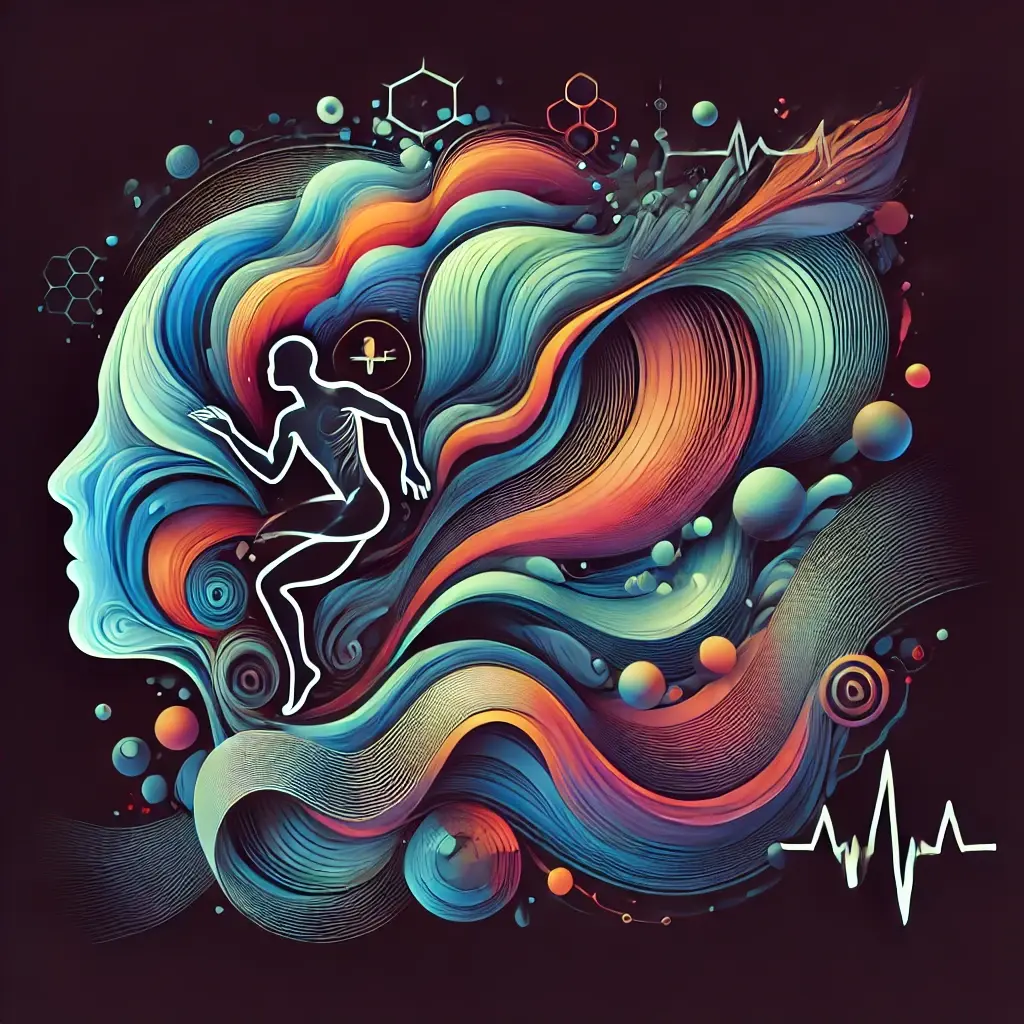Captured Moments in Time
Copyright © Mark Schmelcher | Powered by Mark Schmelcher
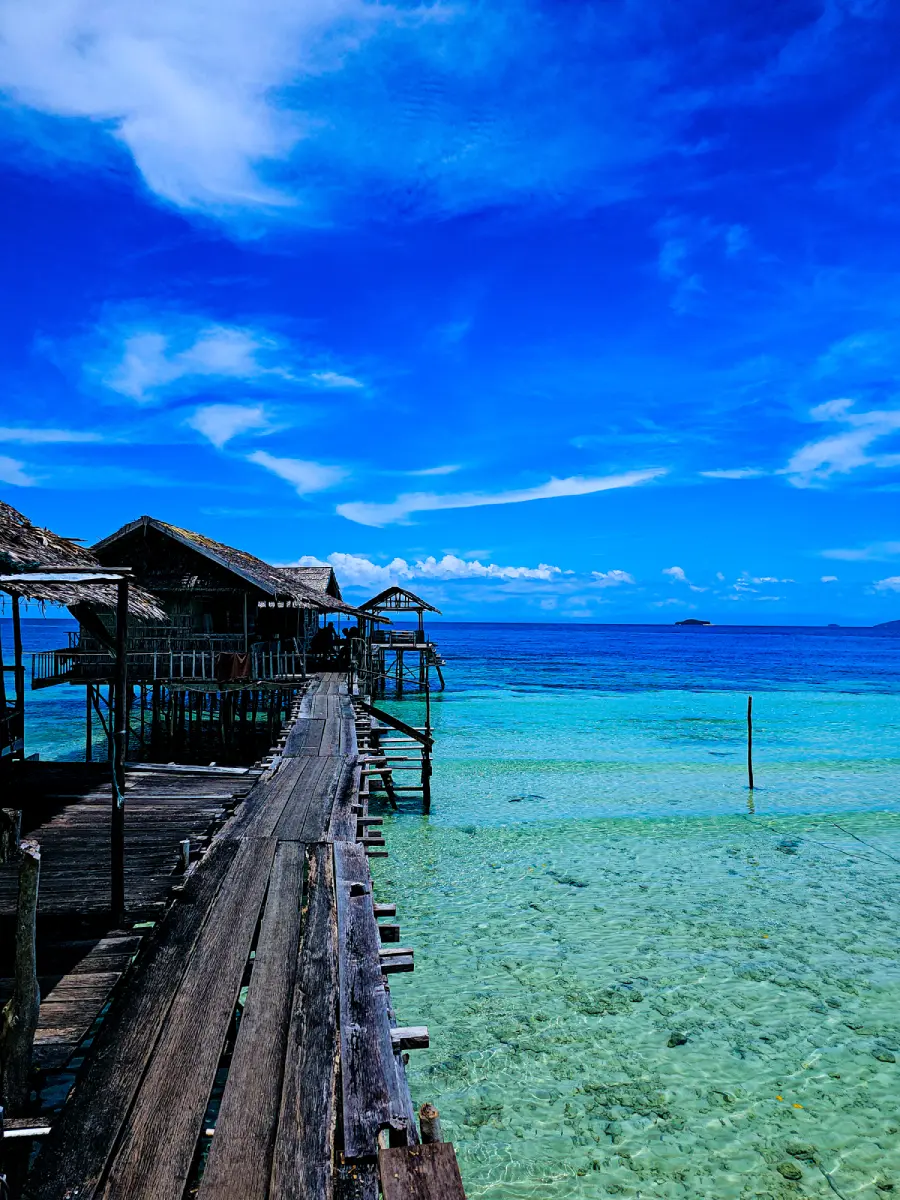
“Sanctuary of Shadows, Under a Blinding Sky”
The weathered planks of the jetty seem to whisper tales of countless footsteps, each seeking refuge from the relentless sun. The figures, huddled under the fragile thatched roofs, embody the instinctual human search for comfort and shelter amidst the brilliance of the day. The interplay of light and shadow creates a striking contrast, mirroring an internal duality: the yearning for exploration across the vast sea and the simultaneous pull toward safety beneath the web of shelter.
In exteroception, the image reflects a place of gathering, a transition between land and sea where human fragility meets nature’s grandeur. Internally, it stirs a sense of balance between adventure and rest, between facing the vast unknown and finding solace in the familiar. This place, precarious yet enduring, becomes a metaphor for our ability to withstand the intensity of life while seeking moments of respite and reflection.
The Last Stand: A Testament to natures Resilience
This lone palm tree, its crown fractured and its trunk scorched, stands as a silent witness to the ravages of time and elements. The barren expanse around it—an arid graveyard where the sea once danced—hints at a past rich with vitality, now reduced to a stark narrative of survival. The tree, struck by lightning yet refusing to yield, embodies a paradox of strength and fragility. It is nature’s enduring will to live, a solitary figure against an indifferent sky.
This sentinel tree speaks of resilience, not merely as defiance against destruction but as a quiet persistence. It has endured the violent kiss of storms, the wrath of lightning, and the abandonment of nourishing waters. Yet, it stands—scarred, stripped of its glory, and yet unyielding. Its shadow, though faint, stretches across the parched earth, whispering stories of struggle and tenacity to those who care to listen.
The barren land represents the fading presence of life—an allegory for environmental degradation. The lightning-scarred tree, stripped yet upright, symbolizes humanity’s precarious relationship with nature. It questions: How much can one endure before breaking? And yet, it also inspires: Even in the absence of hope, resilience can create its own meaning.
The image compels the viewer to confront both awe and unease. The sky, almost indifferent in its vastness, reminds us of the transient nature of existence. This tree, though weathered, becomes a monument—a testimony that life, no matter how fragile, persists even against the odds.
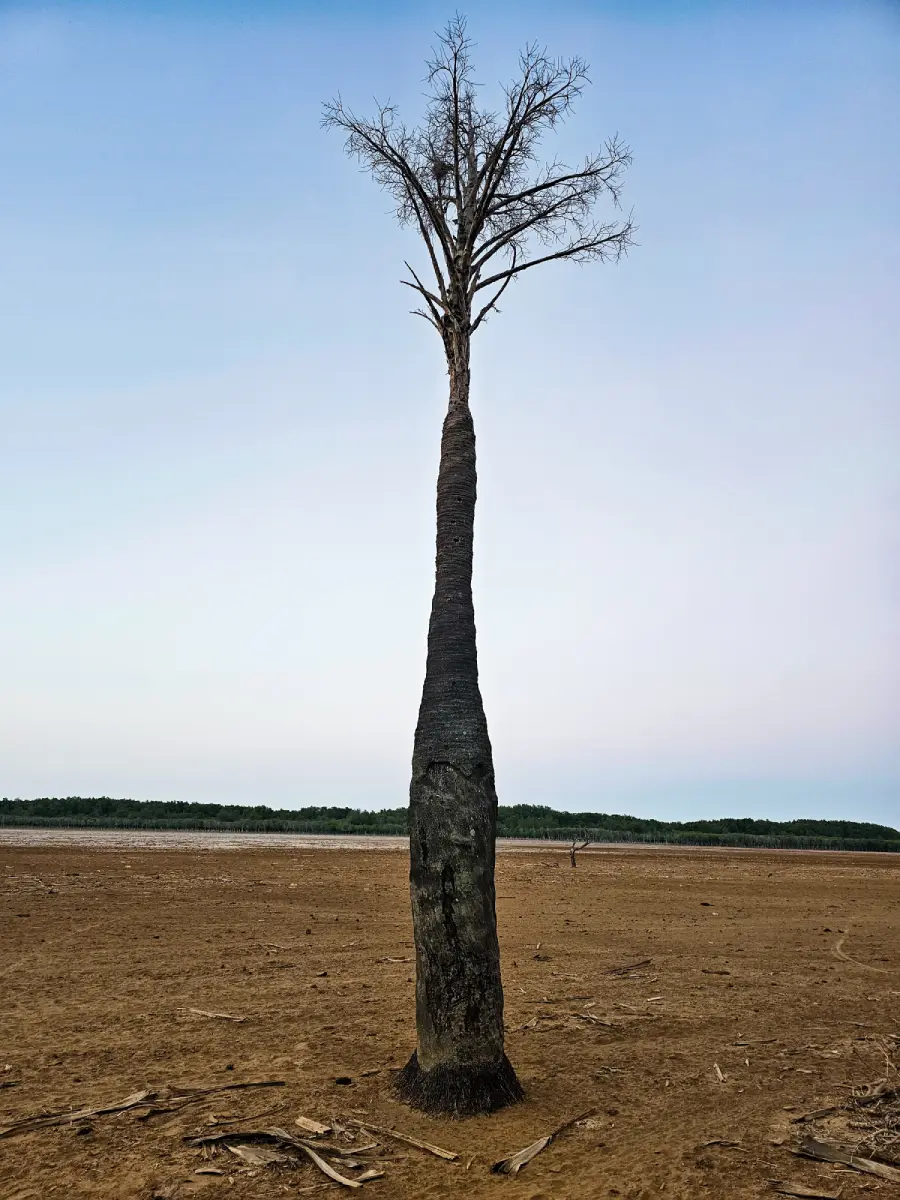
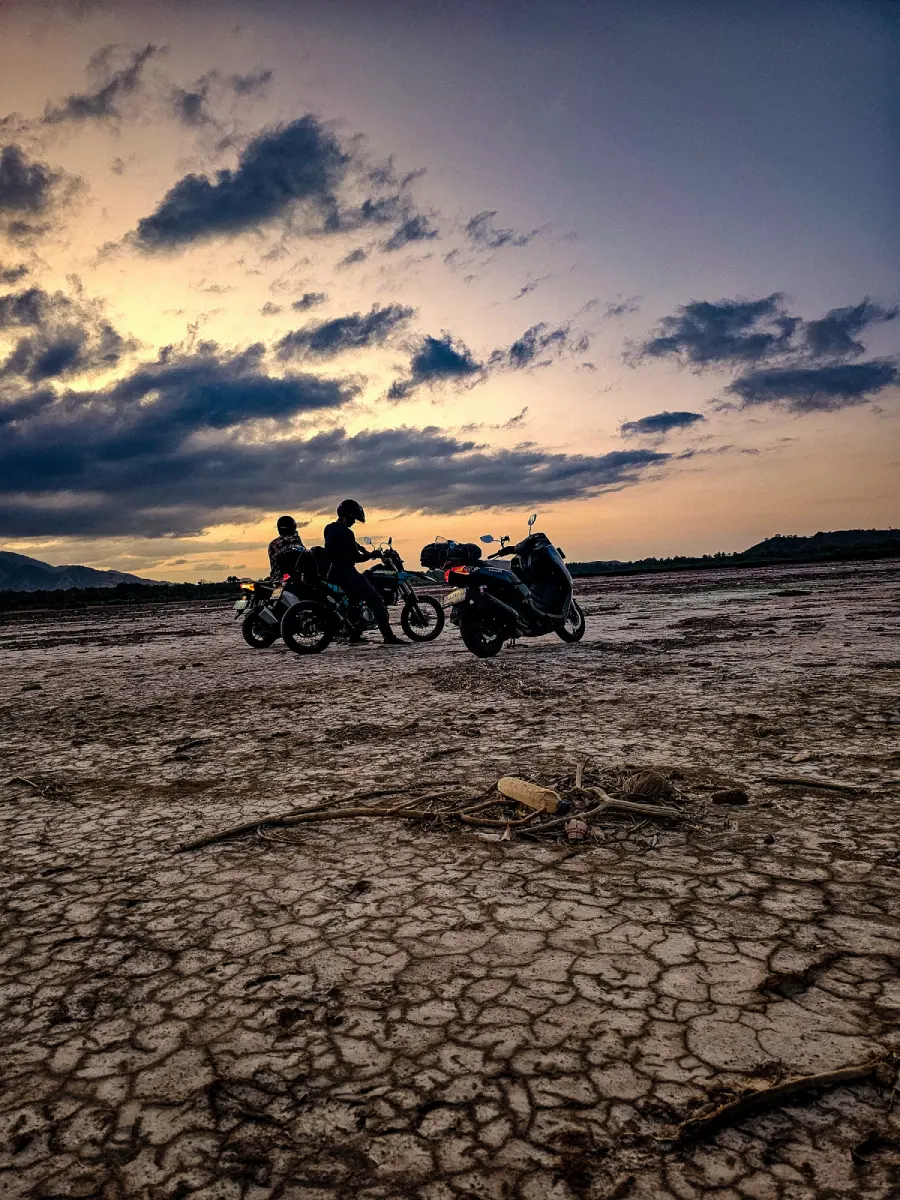
Riders of the Vanished Tide: Echoes Across a Dead Sea
The dead sea beneath them is more than a landscape; it is a witness to time’s unrelenting march, a canvas of loss painted with the absence of life. The cracked earth whispers of evaporation, of waters drained and creatures displaced. It confronts the riders with the fragility of ecosystems, a poignant reminder of how easily vibrancy can fade into stillness.
The sky above, though fading, holds a soft defiance—a fleeting beauty that resists the desolation below. The interplay of the living and the dead, the remembered and the forgotten, creates a tension that wraps the riders in its narrative. They are not just travelers but chroniclers, bearing witness to a landscape that demands reflection.
Whispers of Dusk: Reflections of Tranquil Unease
This scene speaks to the universal experience of endings—the day’s slow surrender mirroring the inevitability of change. It carries the longing to preserve the beautiful yet fleeting, a quiet plea to linger just a moment longer in the embrace of dusk. Yet, there’s a slight unease: the reflection that blurs the line between what is and what appears to be, the figure inside whose story we can only guess.
It is a reminder that even in the calmest moments, the undercurrent of life’s uncertainties remains. The whispers of dusk carry not just the promise of rest but the quiet truths we avoid in the noise of daylight. It is as mesmerizing as it is haunting, leaving us with a question: is the calm truly calm, or is it the stillness before a storm we can not see?

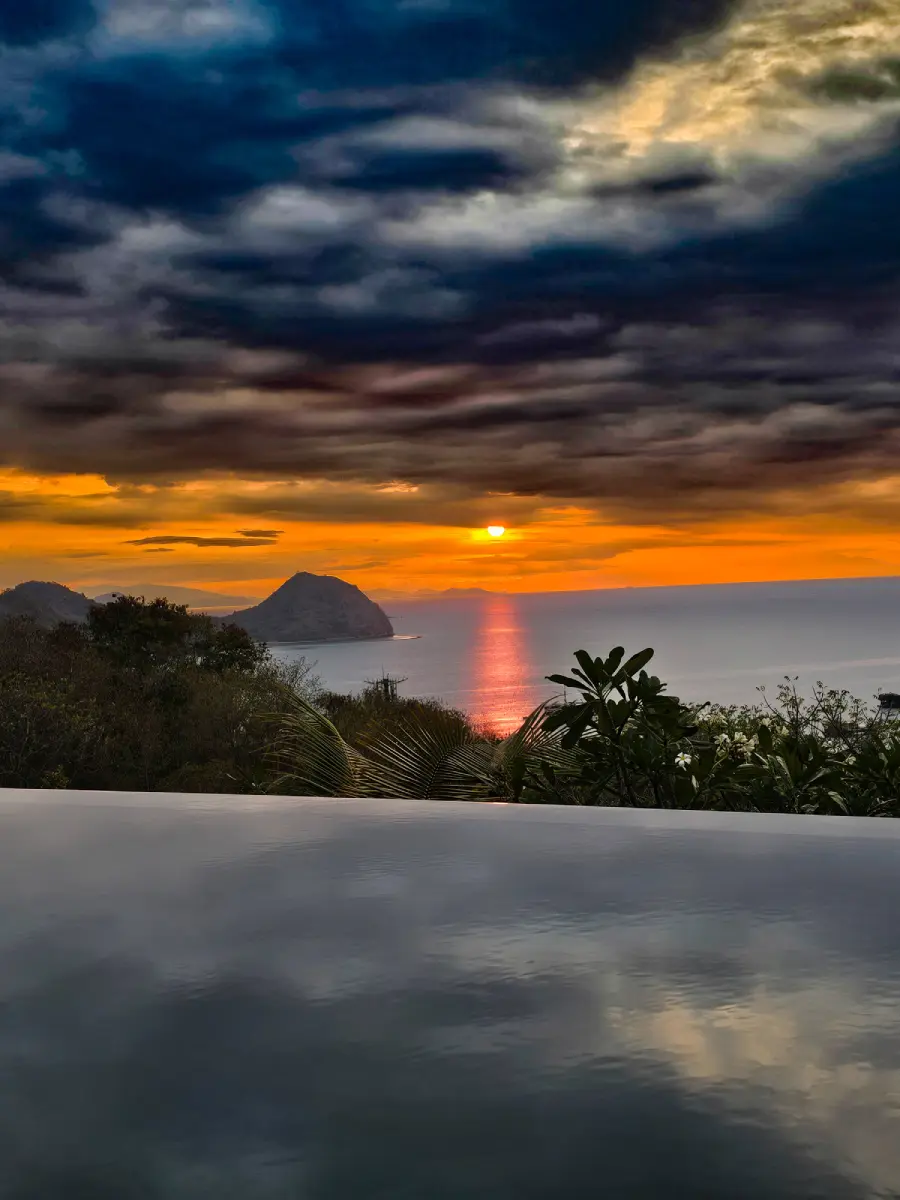
“Pathway to Serenity: The Sun’s Gentle Farewell”
You can see the tranquil essence of the image—a moment where the sun’s golden light carves a luminous path across the still waters, leading the eye to a distant horizon. The layered composition of water, land, and sky evokes a sense of balance and introspection, where nature orchestrates a serene farewell to the day.
The soft interplay of light and shadow mirrors the calm and contemplative mood, inviting the viewer to pause and reflect. It’s a reminder of the quiet beauty found in transitions, as the world slows to embrace the approaching night with grace and calm.
“Illusions of Life: The Coral’s Crimson Veil”
This image captures a serene moment veiled in bittersweet beauty. The delicate pink sands, born from the remnants of dead red coral, create an illusion of vibrancy amidst the vast interplay of sea and sky. The man’s solitary walk mirrors humanity’s quiet imprint on nature—a fragile dance between reverence and impact. The broken coral, turned to dust, symbolizes both the persistence of life and the inevitability of change, inviting reflection on what we leave behind and how beauty can arise from the echoes of loss. The horizon stretches infinitely, yet the sands remind us of nature’s finite fragility.
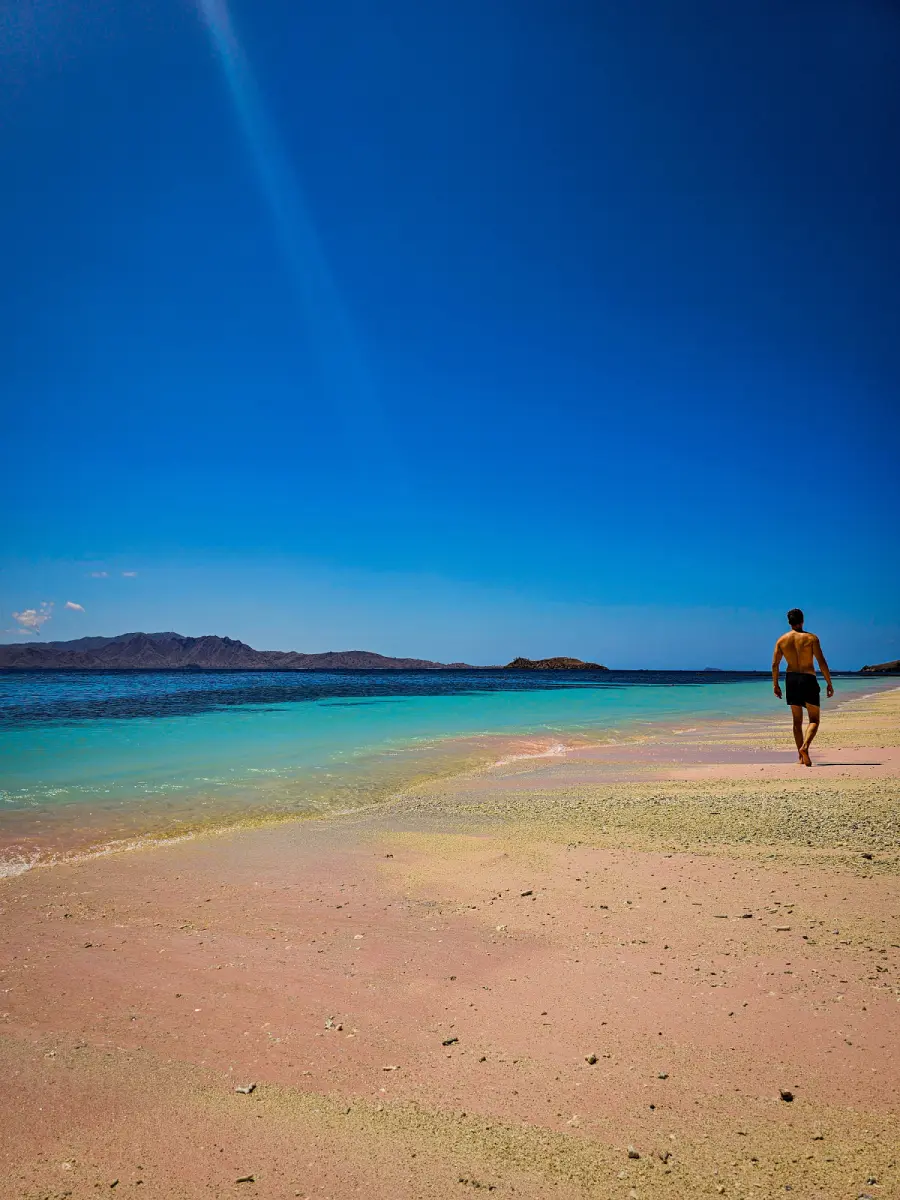
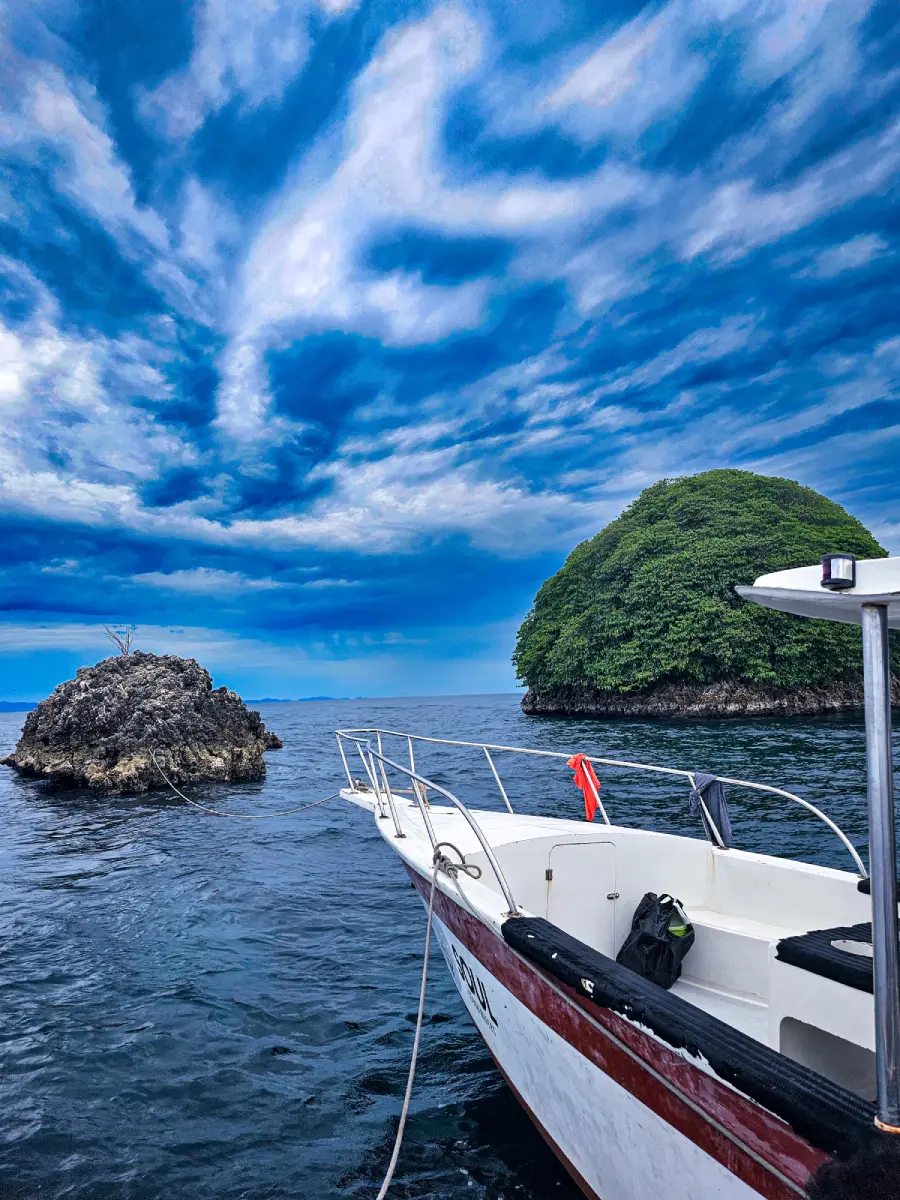
“Anchored Between Worlds: A Pause Between Life and Death”
The picture emphasizing the stark contrast between the two islands—one lush with vibrant greenery, teeming with life, and the other barren, with only a skeletal tree standing as a solemn reminder of desolation. The boat, caught in the middle, becomes a metaphor for humanity’s precarious position between creation and decay, vitality and void.
The barren island, symbolizing “Death,” is a haunting yet poignant counterpoint to the thriving green beauty of its counterpart. This interplay evokes a reflection on the fragility of life, the inevitability of death, and the choices we make in navigating these dualities. The scene is a meditation on balance: how nature itself, in its boundless power, holds both life and death in delicate harmony, challenging us to respect and cherish the living while understanding the inevitability of its end.
“Reflections on History: A Silent Dialogue Across Time”
This image captures a poignant moment of contemplation, where the observer stands before a grand painting, immersed in the narrative of a bygone era. The artwork itself, alive with expressions and gestures, becomes a window into a pivotal scene—leaders in discussion, decisions being forged, history in motion. The juxtaposition of the solitary viewer with the bustling energy of the painted assembly creates a quiet, thought-provoking tension.
It evokes a profound introspection: How do the choices of the past echo into the present? What lessons lie hidden in their deliberations? The figure standing in quiet reverence becomes a proxy for all who seek meaning in history’s layers, embodying the timeless connection between human curiosity and the stories that shape our world. This is not merely an interaction with art, but a deeply personal engagement with the enduring questions of power, legacy, and the role of the individual in the sweep of history.
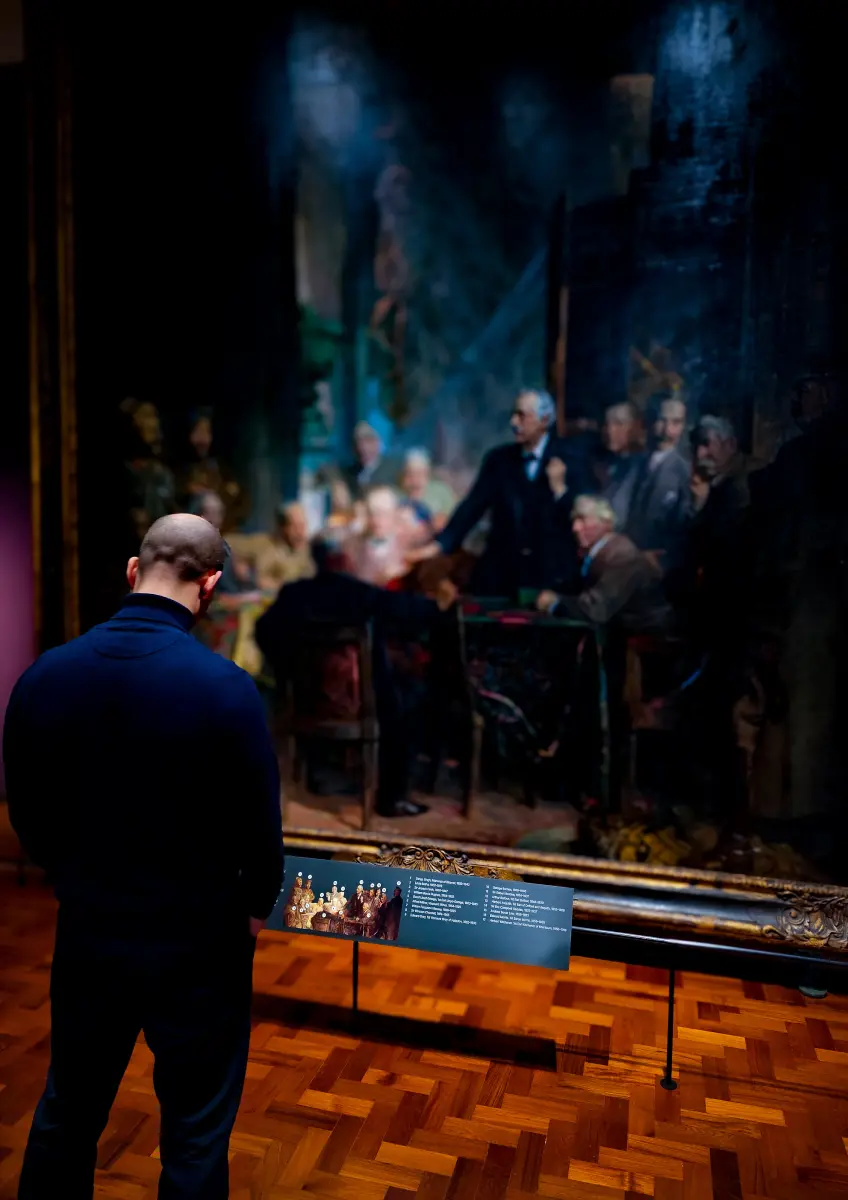

“Golden Reverie: The Dance of Light and Land”
This image captures the poetic beauty of a golden hour, where the sun’s rays stretch across a field of windswept grass, painting the landscape with warm hues of life and transition. The rolling hills and the distant silhouette of a lone figure climbing a trail evoke a sense of quiet determination, as if nature and humanity are in silent dialogue.
The interplay between the illuminated earth and the expansive sky creates a powerful metaphor for resilience and hope. The rugged textures of the land meet the soft light of the setting sun, speaking to the harmony that exists when nature’s rawness is softened by the beauty of its cycles. It’s a moment suspended in time, inviting contemplation on the connection between light, life, and the paths we carve through existence. This image’s uniqueness lies in its subtle grandeur—a humble landscape elevated by the fleeting magic of light and shadow.
The Ignition of Dawn: A Rapture Divided
As the sun ascends, it sets the heavens ablaze in a kaleidoscope of fiery hues, igniting the morning with a promise of renewal. This is no ordinary sunrise—it is a cosmic moment, where nature orchestrates its symphony of light and shadow. The sky, painted in the flames of dawn, reflects its glory upon the still waters, creating a bridge between realms, an infinite dance of above and below.
Yet, the dark silhouette of the island stands resolute, dividing the harmony. It holds the light at bay, as if shielding a secret, resisting the inevitable advance of day. The island becomes a symbol—of solitude, of struggle, of holding onto the night even as the day claims its dominion. It reminds us that even in nature’s grandeur, there is resistance, a quiet battle against transformation.
The water, untroubled and serene, cradles both light and shadow, reflecting the fiery sky without judgment, blurring the lines between what is above and what is within. It whispers of unity in division, of the beauty that arises not in the triumph of one force over another but in their coexistence.
This sunrise is more than an awakening—it is an ignition, a beginning not of certainty but of infinite potential. It asks us to consider: what parts of us resist the light, clinging to the familiar shadows? And where do we, like the water, mirror the world around us, blurring boundaries between what we take in and what we give back?
Standing at the edge of this fiery dawn, one cannot help but be both humbled and emboldened. It is a reminder that even in our separateness, in the islands we build around ourselves, we are connected to a far greater whole—a rapture divided yet bound by the endless beauty of nature’s rhythm.
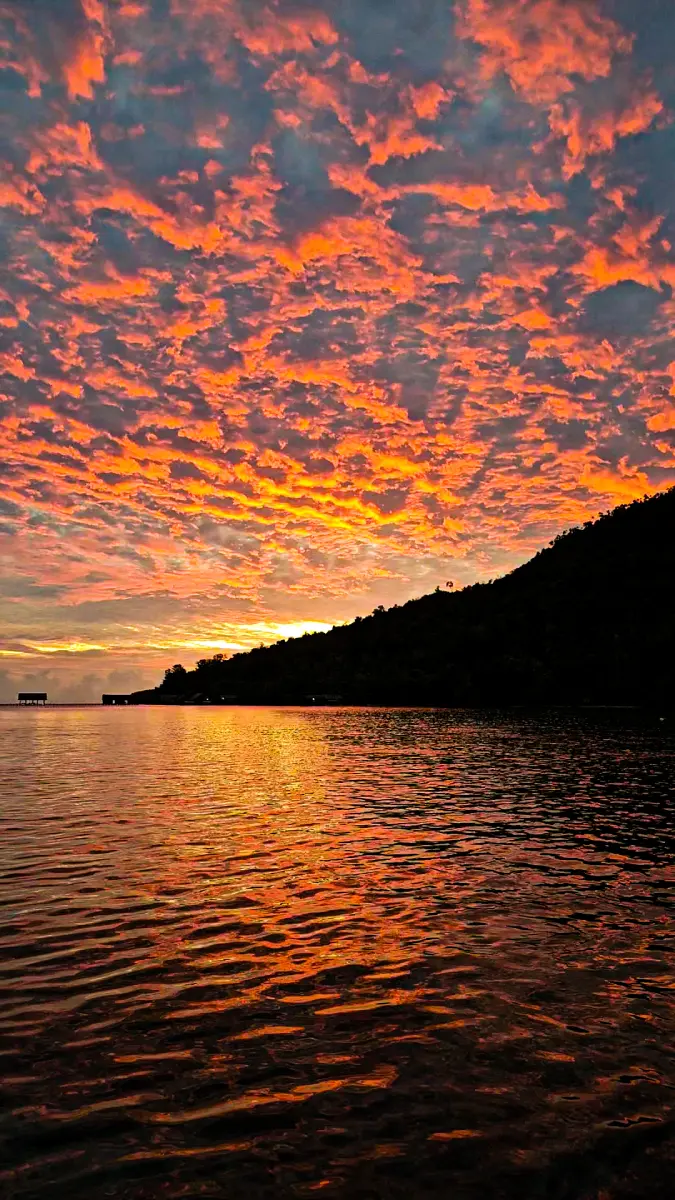
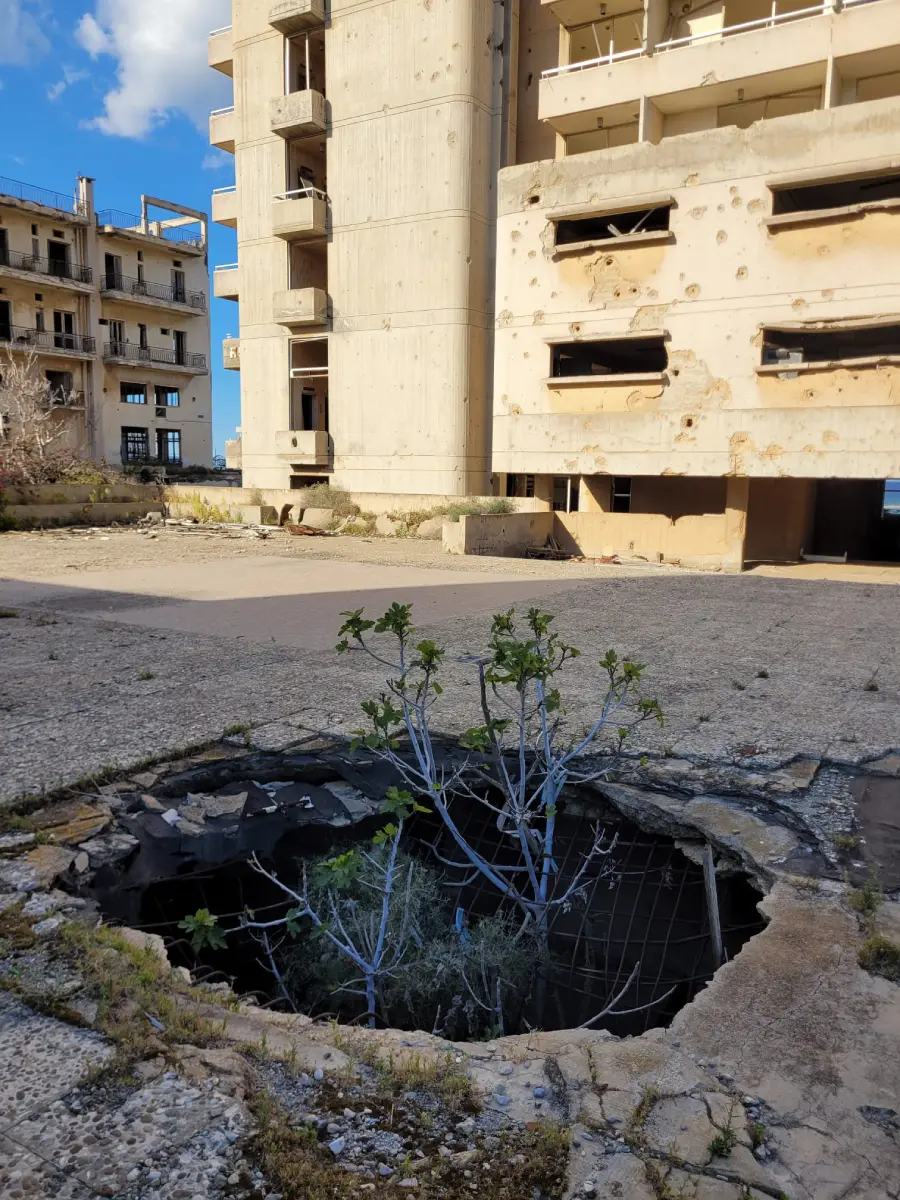
The Silent Reclaim: Nature’s Triumph in the Shadows of Abandonment
The abandoned city in Cyprus, scarred by human conflict and frozen in time, stands as a testament to humanity’s transient dominance. Amid the ruins, nature quietly perseveres, pushing through cracks and reclaiming its place. The lone tree emerging from destruction is a poignant symbol of life’s persistence—a reminder that nature, undeterred by humanity’s disruptions, will always find a way to reassert its supremacy, weaving its roots through the remnants of war and abandonment.
In Nature’s Quiet Gaze
In this sunset, where the serene waters cradle the horizon, nature offers a profound mirror to the human condition. The stillness invites not only outward observation but inward exploration—a merging of exteroception, the senses tuned to the beauty of the world, and interoception, an awareness of the self. This moment, where light fades gently into the horizon, reminds us of the quiet rhythm that connects us to the earth and ourselves. It speaks to the peace that arises when we align with the natural ebb and flow of existence, a fleeting harmony between the outer calm and the inner stillness.

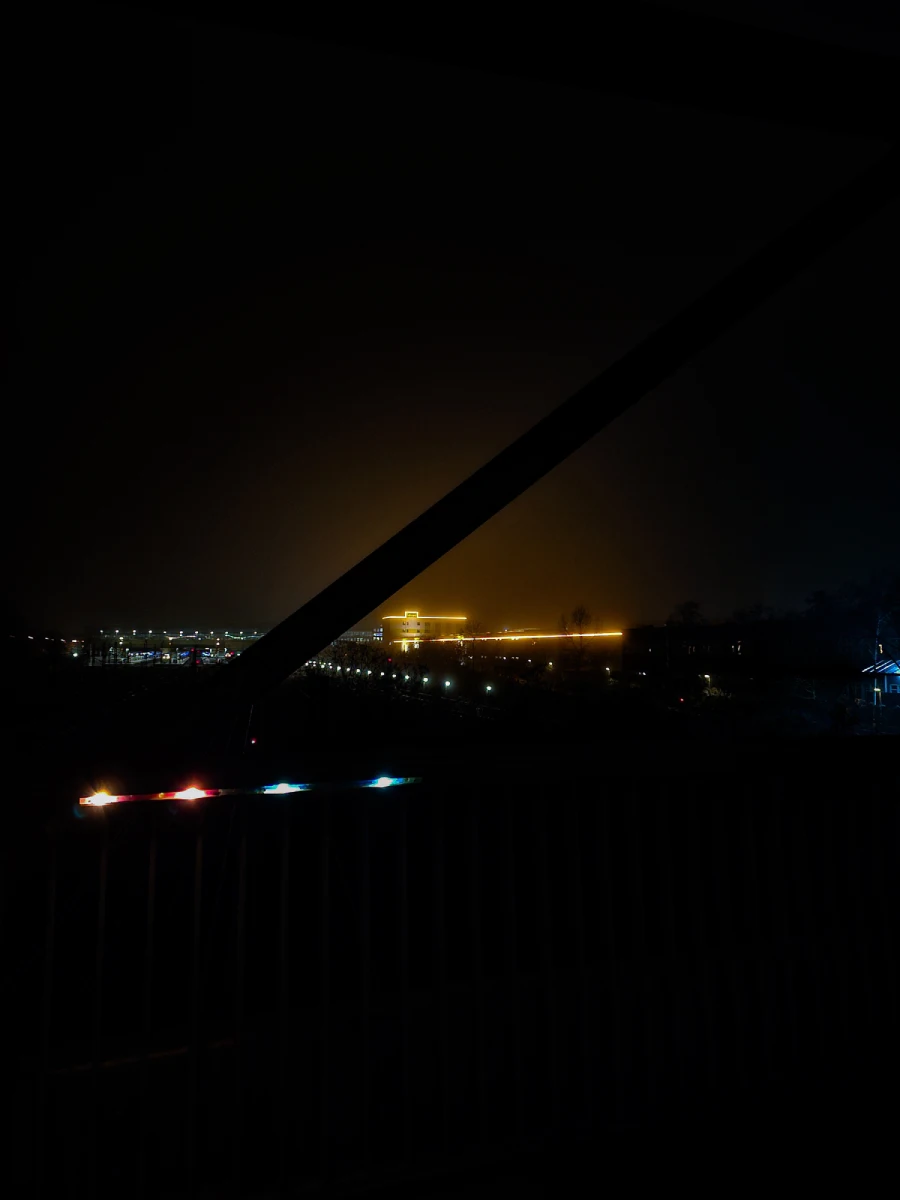
Berlin
A Dance of Light and Darkness” Berlin is like this image, a city of contradictions. The distant lights lure you in with their endless possibilities, while the darkness of the city can sometimes weigh heavy in winter times. The bridge stands as a symbol for every Berliner and newcomer: Do you move forward and conquer the city, or does the darkness hold you back? The reflections on the railing—flashes of color, echoes of club nights, headlights from the metropolis—remind us that in Berlin, there is always a spark of hope glowing somewhere. Yet behind the brilliance often lies a city that is raw, direct, and unfiltered. Love or hate? Berlin forces you to choose. But sometimes there is something in between.
“Sajak Laut: A poem for the sea”
This Picture contrasts the serene yet vibrant colors of the sky with the small, solitary boat cutting through the vast, untamed expanse of water. It evokes a sense of introspection about isolation, movement, and the juxtaposition of calmness and determination in life’s journey.
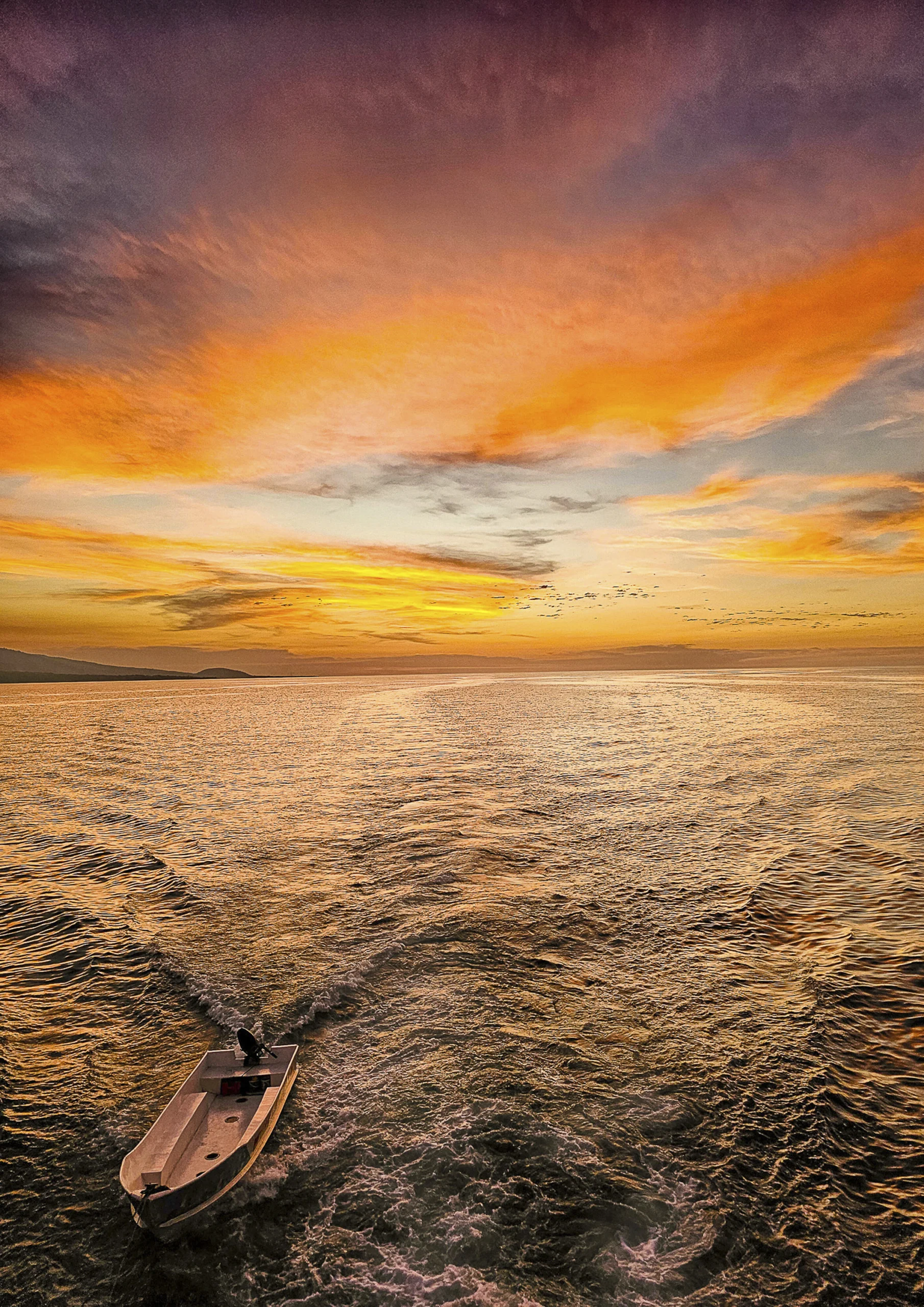
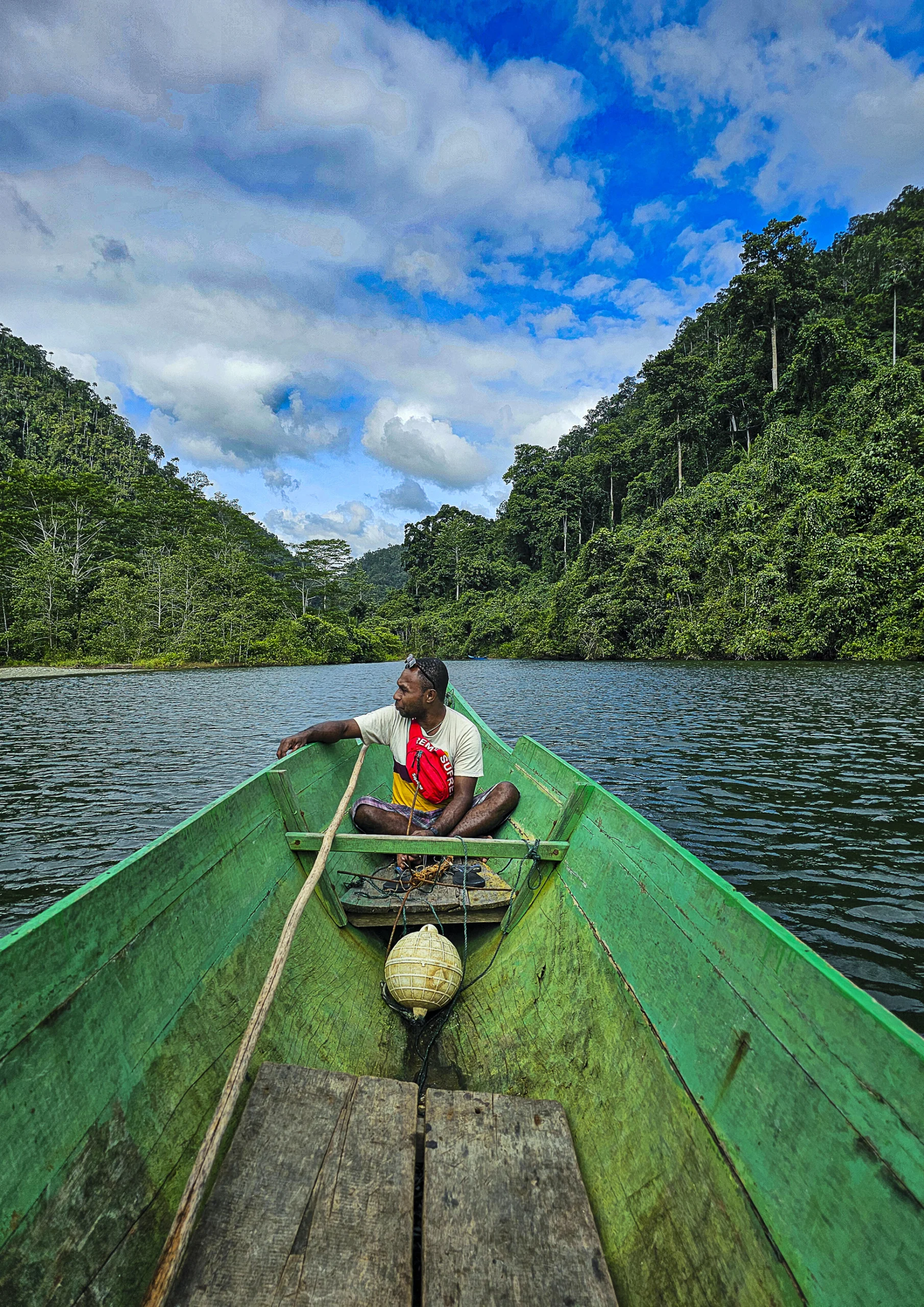
“A Journey Through Verdant Silence”
This Picture evokes the tranquility of navigating through lush, untouched greenery, with the subject embodying a connection to nature and introspection. The image suggests a sense of discovery and serenity, as the boat carves a path through the still waters framed by the towering jungle, hinting at both physical and metaphorical journeys.
“A Fragile Rebirth”
This Picture captures the contrast between the harsh, barren landscape and the tender yet determined young tree. It symbolizes hope, persistence, and the delicate balance of life persevering in the face of adversity, suggesting a cycle of renewal amid desolation.
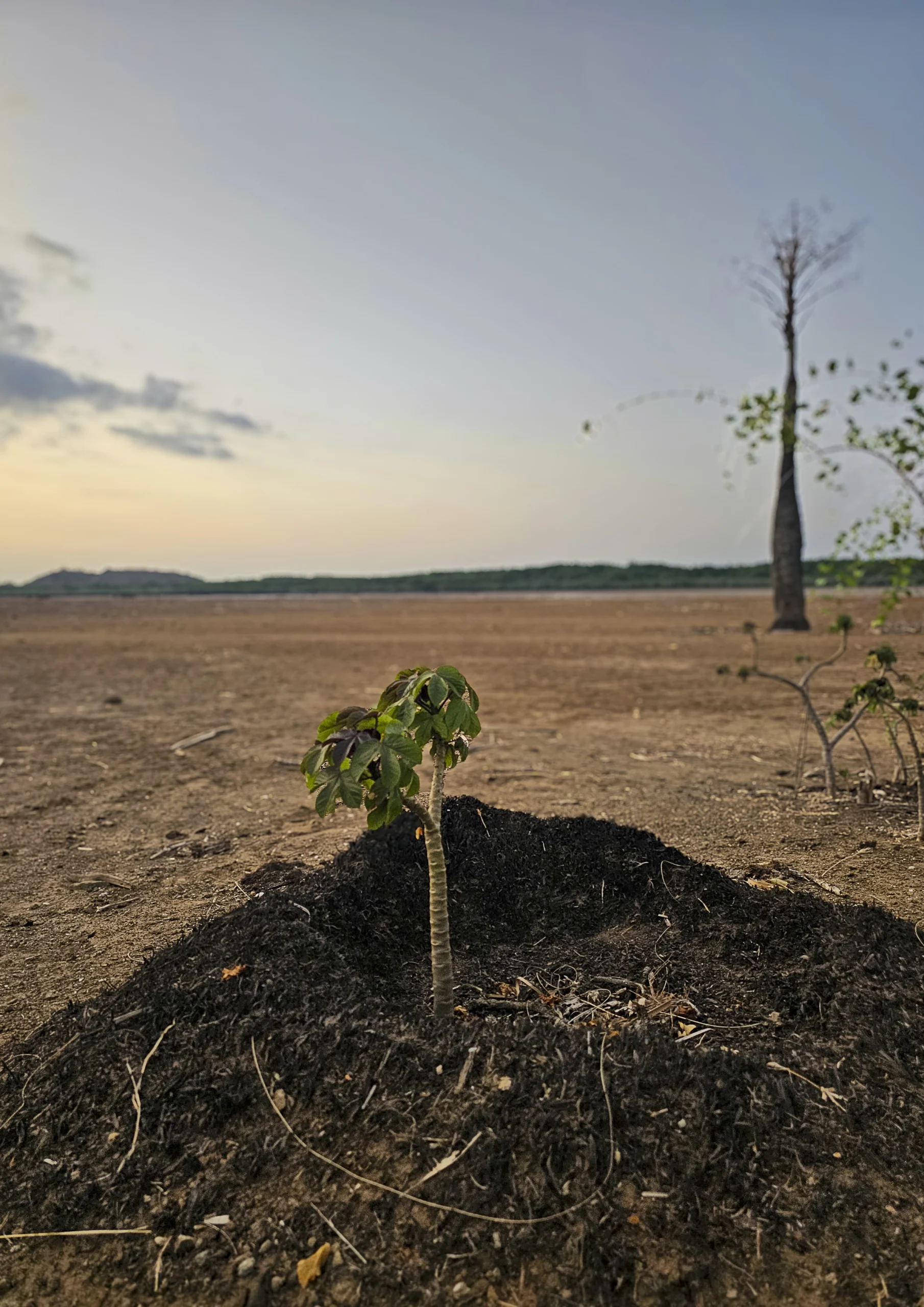
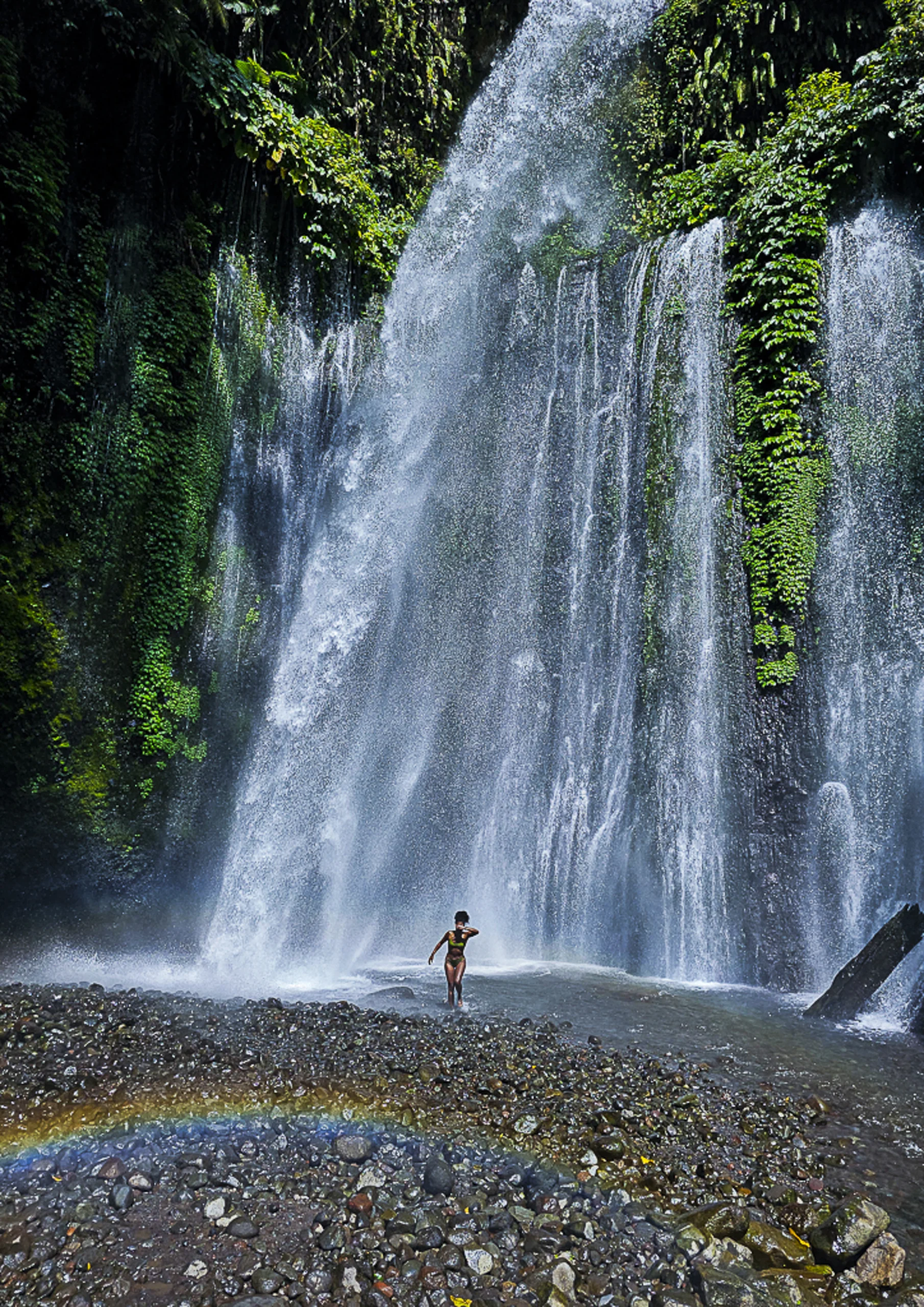
“Chasing Eternity”
This Picture radiates the raw beauty and boundless energy of nature’s masterpiece. The towering waterfall embodies power and purity, an unrelenting cascade that carves life into the earth, while the figure below appears as a fleeting fragment of humanity, daring to step into its forceful embrace. The delicate arc of the rainbow, born of mist and sunlight, bridges the elements—a mysterious reminder of harmony amidst chaos.
The interplay of vibrant greens, shimmering water, and soft prismatic hues evokes a symphony of nature’s contrasts: strength and fragility, chaos and serenity, permanence and ephemerality. It’s a celebration of life’s forces, where the human presence is both humbled by and in awe of the grandeur surrounding it—a poetic dialogue between the natural world and the spirit within us all.
“The Blue River of Raja Ampat”
This Picture embodies the fragile, harmonious coexistence captured in the scene. The tranquil presence of the human figure, immersed yet unintrusive, raises a poignant question: Can humanity and nature truly exist in respectful unity, sharing space without erasing the essence of one another?
The serene flow of the emerald-blue water mirrors the calm of the moment—a stillness that speaks not of dominance but of mutual reverence. The forest stands as a silent witness, its ancient rhythm unbroken, while the human presence becomes a quiet celebration of that rhythm rather than an interruption.
This image invites deep introspection: a reminder that our existence is not separate from the natural world but woven into its fabric. It asks us to reflect on our role—not as conquerors but as humble participants, capable of cherishing and preserving the spaces that sustain us. It is a call to embrace the profound beauty of coexistence, where neither nature nor humanity seeks to overshadow the other, but instead finds balance in shared respect.

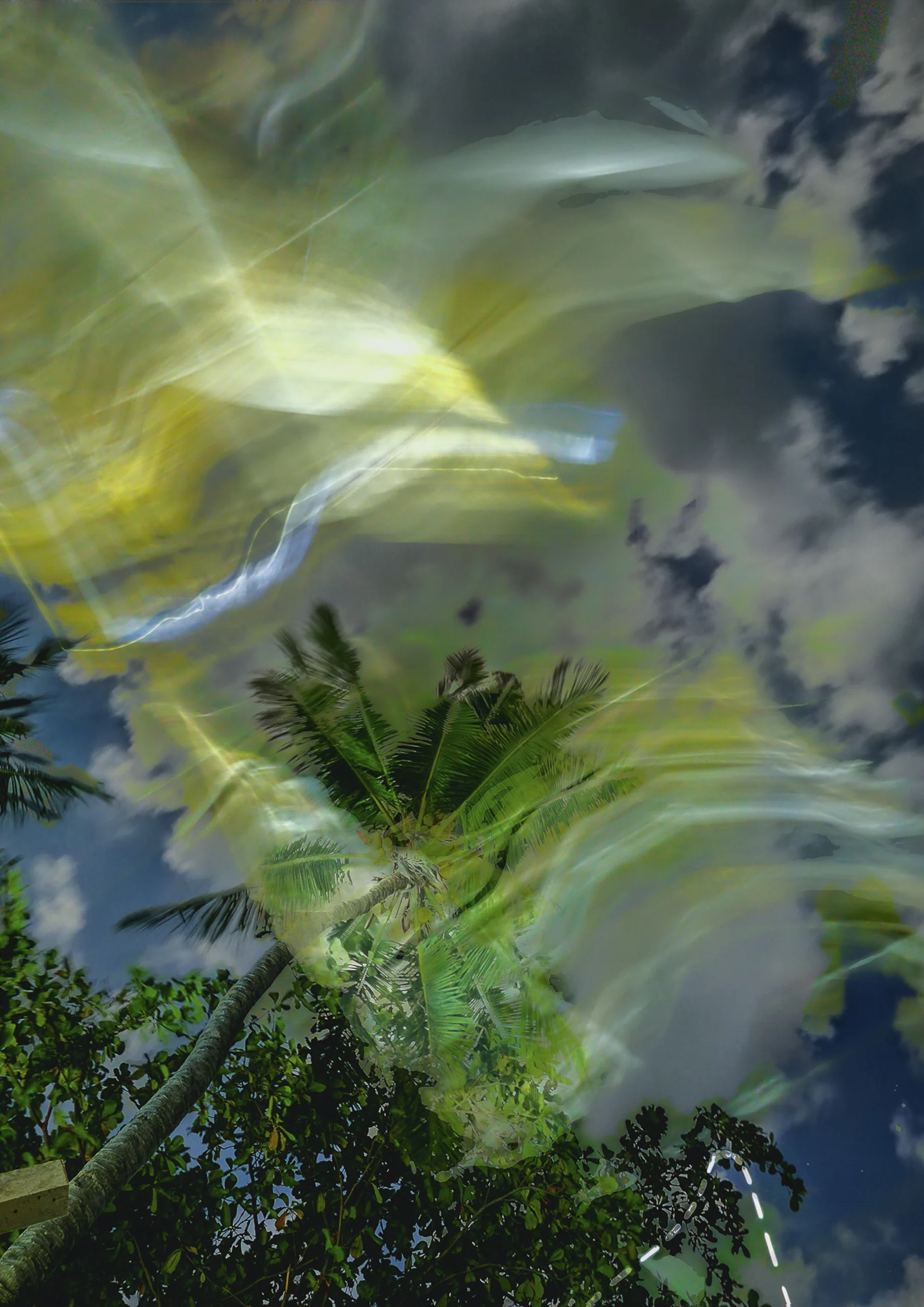
“Dreamscape of the Tropics: Nature’s expressionistic Dance”
This Picture transcends the physical, blurring the lines between reality and imagination creating a expressionistic composition. The surreal interplay of light, shadows, and reflections evokes a dreamlike state, where palm trees reach toward the heavens, shrouded in luminous waves that resemble cosmic energy flowing through the air.
The blending of colors and textures mirrors the fluid connection between earth and sky, a dance of light that transforms the ordinary into the extraordinary. It asks the viewer to pause and reflect: Is this nature as it is, or as we perceive it in fleeting moments of wonder? The scene suggests a balance between grounded reality and transcendent beauty, where the tangible meets the intangible, and nature reveals its hidden, ethereal spirit.
“Raja Ampat´s Sunset Symphony”
This Picture captures a fleeting moment where the sky and sea become one—an infinite canvas painted with the warm breath of the setting sun. The clouds swirl like brushstrokes from an unseen artist, blending fire and serenity in perfect harmony. The water, a silent mirror, holds the sky’s reflection like a whispered secret, distorting and deepening its beauty.
It is a scene that invites introspection—where time slows, and thoughts drift as effortlessly as the tide. Natural meditation unfolds, where the vastness of the ocean reminds us of our smallness, yet the brilliance of the sky reassures us of our place in something greater. It is both an ending and a beginning, a moment that lingers in the soul long after the sun has vanished beyond the horizon.
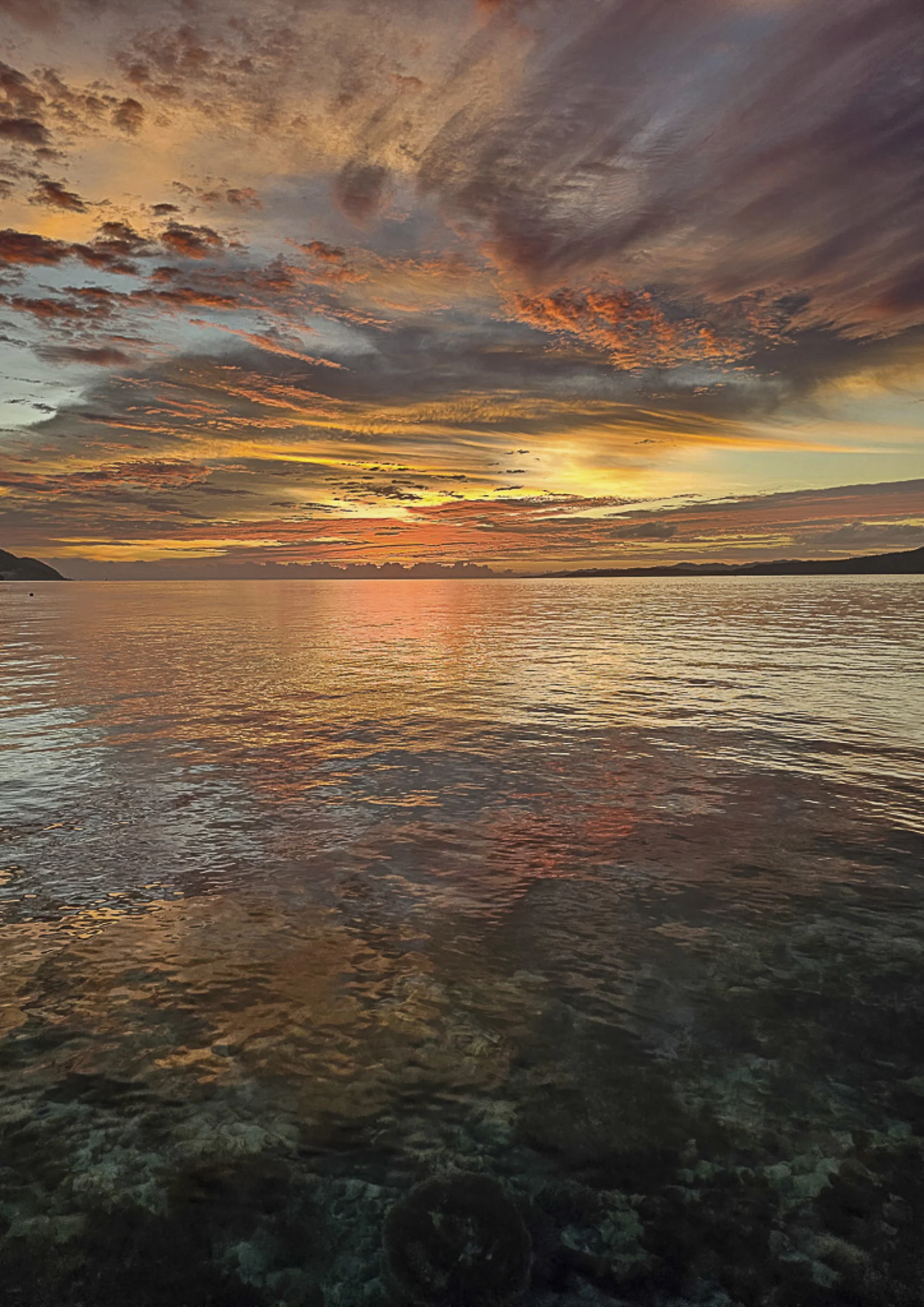
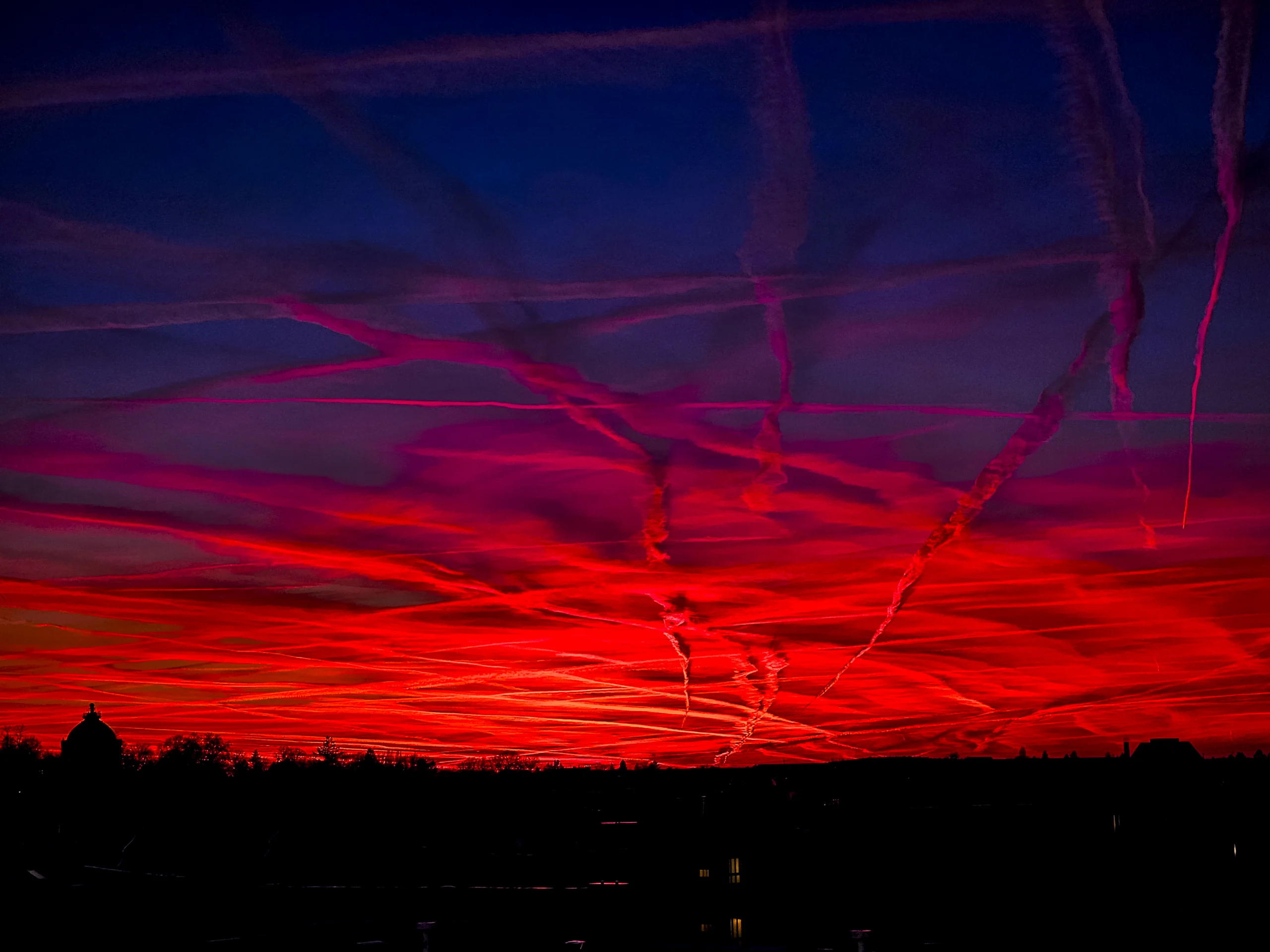
“The Soul of Romanticism over Berlin”
This image, like Romantic art torn from the soul of the 18th century, carries the weight of a city that has lived through the sublime and the tragic, involving the beauty of nature. The sky, streaked with fiery red and deep violet, resembles a vast, wounded canvas—both celestial and human. It is as if the heavens themselves bleed for Berlin, a city forever caught between destruction and rebirth.
The chaotic streaks resemble the scars of time, battles fought both in the air and within the soul of the city.
As the silhouette of Berlin sits in shadow, the sky burns not with fire, but with memory—memories of war, of walls rising and falling, of voices lost and found. This could be the sky of an apocalyptic dream, or of a revolution yet to come.
